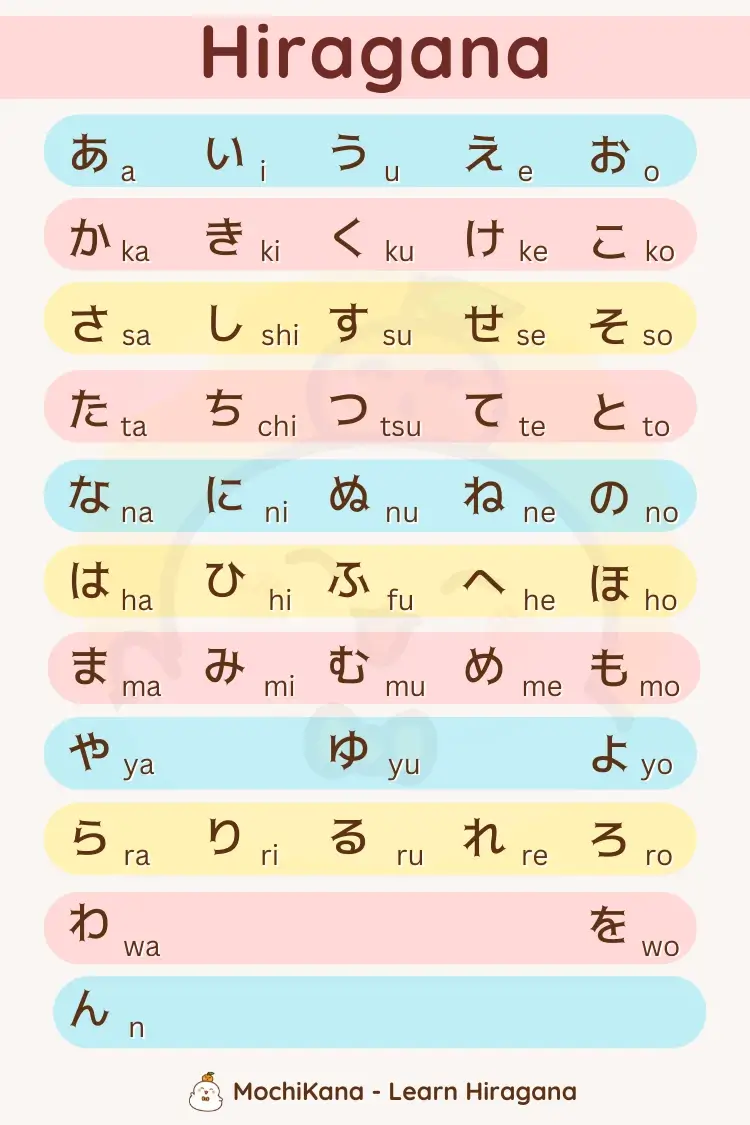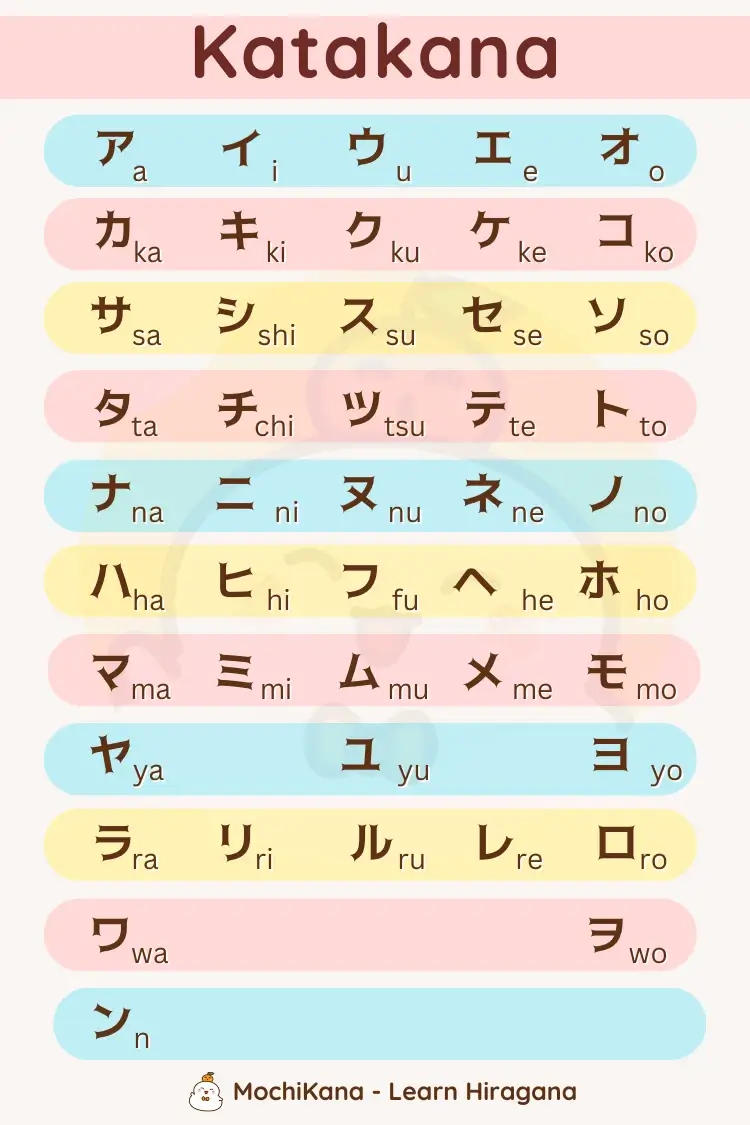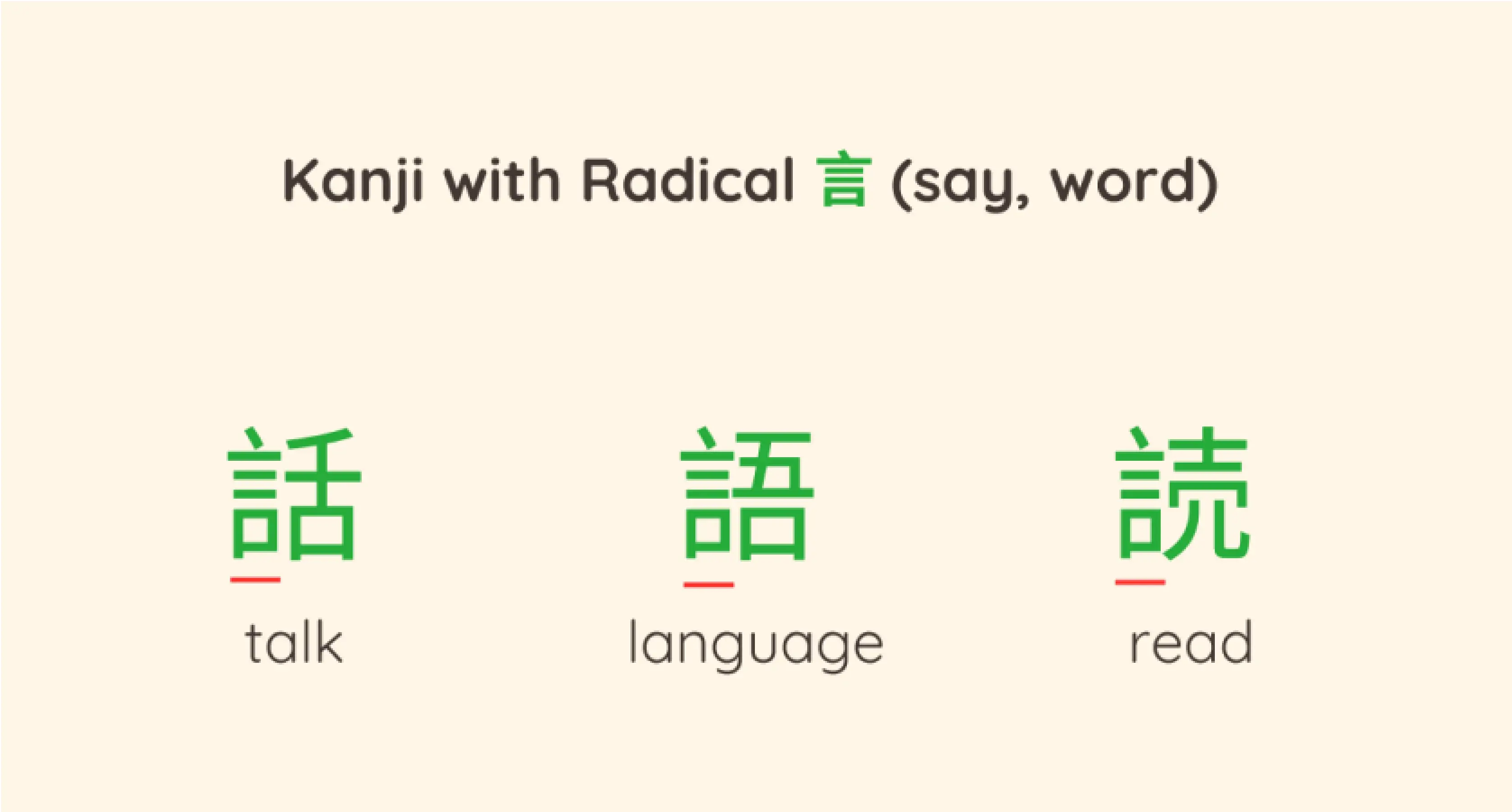LET'S LEARN JAPANESE
Are you ready to dive into the wonderful world of Japanese? Awesome! Buckle up, because we're about to embark on an exciting journey together.
Learning a new language like Japanese is no walk in the park. It's going to take some real dedication and effort on your part. But hey, nothing truly worthwhile comes easy, right? So let's roll up our sleeves and get started!
Now, before we dive in, let's get one thing straight: learning Japanese isn't going to be a breeze. Forget those promises of overnight fluency or magical shortcuts. We're in this for the long haul, and that means putting in the work.
But fear not! With the right approach and a positive attitude, we can conquer this challenge together. So let's kick things off the right way, shall we?
TABLE OF CONTENTS
Welcome to Your Japanese Journey
Hey there, friend! Welcome to your exciting Japanese adventure! 🎉 I'm thrilled that you've decided to embark on this journey, and trust me, it's going to be an incredible ride filled with new discoveries, challenges, and lots of fun!
Starting your adventure: Keep an open mind and excitement.
First things first, keep that sense of wonder and excitement burning bright within you! Learning Japanese is like unlocking a door to a whole new world, so approach it with an open mind and a heart full of curiosity. Embrace the beauty of the language and culture, and you'll find yourself falling more in love with it every day.
Setting the stage: Goals and mindset for a successful journey.
Let's talk about goals! What are you hoping to achieve on this journey? Whether it's mastering conversational Japanese, understanding anime without subtitles, or simply being able to order sushi like a pro, having clear goals will keep you motivated and focused along the way. And remember, it's not just about reaching the destination, but enjoying every step of the journey. So, let's dive in with positivity and determination!
Unlocking the Japanese Alphabet: Hiragana & Katakana
Let's talk about Hiragana—it's like Japan's special alphabet, the first step on our journey to becoming Japanese reading champs!
Hiragana basics: Your first steps into reading, writing and typing Japanese.
Now, don't worry if you're feeling a bit overwhelmed with the idea of learning a whole new writing system. We've got this together, and I'm here to cheer you on every step of the way.
So, why start with Hiragana? Well, it's kind of like the foundation of the Japanese language. Think of it as the soil from which our language garden grows. Without it, we'd be lost in translation!
I know some folks might say it takes ages to get the hang of Hiragana, but guess what? We're not going to follow that slow lane. Instead of spending weeks doodling each Hiragana character, we'll use some cool tricks and tools to speed up our learning process.
Imagine this: with the help of funny games and handy worksheets, you could be reading Hiragana by tonight! Yes, seriously!
With MochiKana support, we're going to tackle both reading and writing Hiragana at the same time! Now, I know it might sound like a double whammy, but trust me, it's going to work wonders for us.
See, by practicing both skills together, we'll reinforce our understanding of Hiragana even faster. Sure, it might be a tad challenging at first, but hey, that's where the fun is, right?
So, let's jump right in and start decoding those hiragana characters. We'll read them, write them, and watch our skills skyrocket together. I promise you, this approach will make our learning journey all the more exciting and rewarding. With our approach, you'll crack the code of Hiragana in just a day or two, instead of dragging it out for a month. Let's do this! 🚀
Let's do this:
Learn to read and write Hiragana togetherUsing MochiKana Mobile App to learn typing Hiragana quickly:
So, what do you say? Ready to tackle Hiragana together and unlock a whole new world of Japanese language and culture? Let's do this! 🎉
Hiragana works sheet

Typing Hiragana in Mobile: Using Romaji is the easiest method
Although I'm a lover of writing Hiragana and Kanji, most of our writing is done on keyboards these days, right? By mastering typing Hiragana, along with a bit of Katakana and Kanji down the line, we'll cover the vast majority of modern writing needs.
And here are the few steps to typing Hiragana on your Mobile:
- Enable the Japanese Keyboard: First, you'll need to enable the Japanese keyboard on your mobile device. You can usually do this through the settings menu under "Language & Input" or "Keyboard Settings."
- Type using Romaji: In the Japanese keyboard, you'll type using Romaji, which is the Romanized version of Japanese characters. For example, type "a" to get あ, "ka" to get か, and so on. The keyboard will automatically convert your Romaji input into Hiragana characters.
- Choose the correct character: Sometimes, the keyboard will offer suggestions for Kanji or Katakana characters based on the context of your sentence. You can select the desired character from the suggestions bar that appears above the keyboard.
Practice Makes Perfect! Like anything worth learning, typing in Japanese takes practice. But hey, we're in this together! Keep at it, and soon enough, you'll be zipping through your Japanese messages like a pro.
Mastering Katakana: Step-by-step guide to reading, typing and writing Katakana.
Understanding the Difference: Hiragana vs. Katakana
Katakana is like the cool cousin of Hiragana. While Hiragana is used for native Japanese words and grammatical elements; Katakana has a sharper, more angular look, reflecting its role in representing foreign words, loanwords, and technical terms. You'll often find Katakana used for words borrowed from other languages, like "コーヒー" (koohii) for coffee or "アメリカ" (amerika) for America. Its distinct appearance sets it apart and signals that you're dealing with non-native vocabulary.
Guideline to Learn Katakana:
- Get Familiar with the Characters: Katakana characters may look a bit different from Hiragana, but trust me, they're just as friendly once you get to know them! Start by familiarizing yourself with the basic Katakana characters and their sounds.
- Learn the Stroke Order: Just like with Hiragana, mastering the stroke order of Katakana characters is key to writing them beautifully. Take your time to practice writing each character following the correct stroke order.
- Associate Sounds with Images: Katakana characters can sometimes resemble the sounds they represent. For example, ソ (so) might remind you of a "sore" shape. Use these visual associations to help you remember the sounds of each character.
- Practice, Practice, Practice: The more you practice, the easier it gets! Set aside some time each day to review and practice writing Katakana characters. You can use worksheets, online resources, or even write Katakana versions of your favorite words.
- Use Mnemonics and Memory Aids: Mnemonics, memory aids, and association techniques can be your best friends when learning Katakana. Create fun stories or visual images to help you remember the shapes and sounds of each character.
- Apply What You Learn: As you progress, start looking for Katakana characters in the wild! Keep an eye out for Katakana words on signs, packaging, and menus. The more you encounter Katakana in real-life situations, the more it will solidify in your memory.
- Stay Positive and Patient: Learning Katakana might feel a bit overwhelming at times, but remember, every step you take brings you closer to your goal. Stay positive, be patient with yourself, and celebrate your progress along the way!
Let's do this:
- Learn to read and write Katakana together
- Using MochiKana Mobile App to learn typing Katakana quickly
Katakana works sheet

Remember, we're in this together, my friend! So let's roll up our sleeves, dive into learning Katakana, and unlock a whole new world of Japanese language and culture. You've got this! 🌟
Japanese Pronunciation
Japanese pronunciation is characterized by its relatively simple sound system and syllable structure.
Overview: Understanding the basics of Japanese pronunciation.
1. Vowels: Japanese has five vowel sounds: "a," "i," "u," "e," and "o." These vowels are pronounced consistently, with each having a single, clear sound.
2. Consonants: Japanese consonants are generally pronounced as in English, with a few exceptions:
- "R" sound: Japanese "r" is a single flap sound, similar to the "d" sound in "butter" or "latter."
- "S" sound: Japanese "s" is always pronounced as in "sun," never as in "rose."
- "Tsu" sound: The small "tsu" (っ) indicates a geminate or double consonant sound, where the following consonant is held for a slightly longer duration.
3. Syllable Structure: Japanese syllables follow a strict pattern of consonant-vowel (CV) or vowel-consonant-vowel (CVC) combinations. For example, "ka," "ki," "ku," "ke," and "ko" are CV syllables, while "kaki," "kiku," "kake," and "koko" are CVC syllables.
4. Pitch Accent: Japanese also has pitch accent, where certain syllables in a word are pronounced with a higher or lower pitch. However, pitch accent is generally less important for beginner learners and can be acquired naturally over time through exposure to spoken Japanese.
Guideline for Beginners: 7 steps to master Japanese Pronouncation
Here's a step-by-step guideline to help beginners improve their Japanese pronunciation:
- Master the Vowel Sounds: Start by familiarizing yourself with the five Japanese vowel sounds: "a," "i," "u," "e," and "o." Practice pronouncing them clearly and consistently.
- Learn Hiragana and Katakana: Since each Hiragana and Katakana character represents a syllable, learning these scripts will help you understand and pronounce Japanese words accurately.
- Listen and Repeat: Listen to native speakers of Japanese and try to imitate their pronunciation. Pay attention to the rhythm and intonation of spoken Japanese.
- Practice Basic Words and Phrases: Start with simple Japanese words and phrases and practice pronouncing them aloud. Use resources like language apps, textbooks, or online tutorials to find beginner-friendly vocabulary lists.
- Record Yourself: Record yourself speaking Japanese and listen back to identify areas for improvement. Notice any differences between your pronunciation and that of native speakers, and work on adjusting accordingly.
- Be Patient and Persistent: Like any skill, mastering Japanese pronunciation takes time and consistent practice. Be patient with yourself and celebrate your progress along the way.
- Seeking Feedback and Persistence: Don't be shy to ask for tips from language buddies or tutors. Keep chatting and practicing regularly to improve. Stick with it—embracing challenges and staying dedicated will speed up your progress!
Let's do this:
- Let's try to learn some common Japanese phrases and conversations
- Practice with MochiKana Mobile App
By following these steps and dedicating time to regular practice, you'll gradually improve your Japanese pronunciation and feel more confident speaking the language. Remember, every effort you put in brings you closer to fluency!
Exploring Kanji
Kanji are the beautiful and intricate characters borrowed from Chinese characters, used in Japanese writing. They represent words, ideas, and even entire concepts, making them an essential part of the Japanese language. Think of them as little puzzles waiting to be solved!
Kanji overview: Unveiling the mysteries of Kanji and its significance.
Guideline to learn Kanji
- Start with Basic Kanji: Begin your journey by focusing on the most commonly used Kanji characters. These are the building blocks of the language, so mastering them will give you a solid foundation to build upon. Start with simple characters that appear frequently in everyday words.
- Learn Stroke Order: Just like with Hiragana and Katakana, mastering the stroke order of Kanji characters is crucial. This not only helps you write them neatly but also aids in memorization. Take your time to practice writing each stroke in the correct order.
- Understand Radicals: Kanji characters are often composed of smaller components called radicals. Understanding these radicals can help you break down complex characters into simpler parts, making them easier to remember. Think of it as solving a puzzle!
- Use Mnemonics and Memory Tricks: Kanji can be tricky, but they're also full of stories waiting to be told. Create mnemonics or visual images to associate with each character to make them more memorable. The more creative, the better!
- Practice, Practice, Practice: Repetition is key when it comes to learning Kanji. Set aside dedicated time each day to review and practice writing Kanji characters. Use flashcards, worksheets, or online resources to reinforce your learning.
- Read, Read, Read: Exposure to Kanji in context is essential for mastery. Start reading simple texts, children's books, or manga with furigana (small hiragana characters above the Kanji) to help you along. The more you read, the more familiar Kanji will become.
- Stay Consistent and Patient: Learning Kanji is a marathon, not a sprint. Be patient with yourself and celebrate your progress along the way. Consistency is key, so keep at it, and you'll be amazed at how far you've come!
Let's do this:
Learn to read and write Kanji step by stepPractice writing Kanji
Using MochiKanji Mobile App to learn Kanji easier:
Kanji radical: Easy strategies to begin your Kanji journey.
Kanji radicals are the building blocks of Kanji characters. They are the smaller components or elements that make up more complex Kanji characters. Think of them as the Lego pieces that you can put together to form different structures.

Why are Kanji radicals important?
Understanding Kanji radicals is crucial for several reasons
- Breaking Down Complexity: Kanji characters can be quite complex, but radicals help break them down into smaller, more manageable parts. By recognizing radicals, you can better understand the structure and meaning of Kanji characters.
- Aiding Memorization: Memorizing hundreds or even thousands of Kanji characters can seem daunting, but radicals provide a systematic approach. By learning common radicals and their meanings, you can more easily remember and recognize Kanji characters.
- Enhancing Vocabulary: Many radicals have meanings or associations that carry over into the characters they form. By understanding radicals, you can often guess the meaning of unfamiliar Kanji characters based on the radicals they contain, thus expanding your vocabulary.
Common Kanji radicals:
There are hundreds of Kanji radicals, but some are more common and recurring than others. Here are a few examples of commonly encountered radicals:
- 人 (ひと) - "Person" radical. Examples: 会 (meeting), 仕 (to do), 休 (rest).
- 口 (くち) - "Mouth" radical. Examples: 口 (mouth), 味 (flavor), 同 (same).
- 木 (き) - "Tree" radical. Examples: 本 (book), 林 (woods), 森 (forest).
- 日 (ひ) - "Sun" radical. Examples: 明 (bright), 曜 (day of the week), 時 (time).
- 水 (みず) - "Water" radical. Examples: 河 (river), 波 (wave), 汽 (vapor)
Learning Kanji radicals:
Here's how you can start learning Kanji radicals:
- Study Common Radicals: Begin by familiarizing yourself with common radicals and their meanings. You can find lists of radicals in Kanji dictionaries or online resources.
- Practice Recognition: As you encounter Kanji characters, try to identify the radicals within them. Pay attention to how radicals contribute to the meaning or pronunciation of the characters.
- Create Mnemonics: Some radicals can be quite abstract, so creating mnemonic devices or visual associations can help you remember them more easily.
- Use Radical-Based Learning Resources: There are resources available that teach Kanji characters based on their radicals. These resources often provide mnemonics, example words, and practice exercises to reinforce learning.
Let's do this:
- Practice writing Kanji
- Using Mochikanji mobile app to learn Kanji easier
By understanding Kanji radicals, you'll gain insight into the structure and meaning of Kanji characters, making the process of learning and memorizing them much more manageable. So, embrace the power of radicals, and let them guide you on your Kanji-learning journey!
On-yomi vs Kun-yomi: What are the differences!
On-yomi (音読み):
- What: Pronunciations borrowed from Chinese.
- Where: Used in compound words, especially those of Chinese origin.
- Example: 大 (big) can be pronounced as "dai" or "tai" in compound words like 大人 (adult).
Kun-yomi (訓読み):
- What: Native Japanese pronunciations based on meaning.
- Where: Used in native Japanese words and expressions.
- Example: 大 (big) can be pronounced as "ookii" in words like 大きい (big).
Summary:
- On-yomi: Chinese-based, used in compounds.
- Kun-yomi: Japanese-based, used in native words.
- Understanding both helps in reading Japanese text effectively.
How many Kanji should you learn?
While there are technically more than 50,000 kanji characters, there is something known as the Joyo kanji (常用漢字). Joyo kanji refers to a list of kanji characters that are designated as “regular-use kanji” by the Japanese government. The term “Joyo” (常用) translates to “regular use” or “daily use.” However, to be considered fluent in Japanese, you only need to know 1,500 to 2,500 kanji — roughly N2 or N1 level. As you improve your Japanese language skills, you’ll notice that it’s easier to read texts with kanji than texts with just Hiragana and Katakana. Why? Kanji characters provide visual cues and help break up the text into meaningful units. So let's get started to find tips that help you to learn Kanji effectively!
How to learn Kanji? (Tips, methods, materials)
There’s a common misunderstanding that Kanji is a separate part of Japanese alongside vocabulary and grammar. No, it’s not. Kanji is basically the written form of words, and it only makes sense to learn them in the context of a word, not in a vacuum.
Kanji have multiple readings and meanings but you are not required to memorize all of them if you acquire them through vocabulary. For instance, the Kanji character “先”: In the word 先生 meaning teacher, the Kanji “先” is pronounced as “せん - sen,” while in the word “先ず” meaning first, it is pronounced as “ま - ma.”

Furthermore, when learning vocabulary and Kanji at the same time, you could guess the meaning of a word. The side effect of this is that you'll start to pick up on the meaning of the kanji in the words you're learning. I think I responded to you or someone else in that thread but it's like how you'll see that in 最高, 最悪, 最低 they all share the same 最 kanji, which you might look up out of curiosity, and find that it means 'most/highest/extreme'. You'll easily be able to recognize and remember this meaning in any new words you come across containing it, and usually have a good guess at what the word itself means.
Let's do this:
- Practice writing Kanji
- Using Mochikanji mobile app to learn Kanji easier
Typing Kanji on mobile: Step by step to type Kanji on mobile phone.
Ready to make typing Kanji on your mobile device a breeze? With a few simple steps, you'll be composing messages and texts in Japanese like a pro. Let's walk through the process together, making it easy and enjoyable. Here's how to get started!
- Enable Japanese Keyboard: Go to your phone's settings, add the Japanese keyboard under "Language & Input."
- Switch to Japanese keyboardt: While typing, switch to the Japanese input mode by tapping the globe or language icon on your keyboard until you see "日本語" or "あ"
- Type Using Romaji: In Japanese input mode, type using Romaji (English letters). For example, "tai" for 大 (big) or "eki" for 駅 (station).
- Select Kanji from Suggestions: As you type, your keyboard will suggest Kanji characters based on the Romaji input. Tap the desired Kanji from the suggestions bar above the keyboard.
- Confirm and Continue: Once you've selected the Kanji you want, tap it to confirm, and continue typing or composing your message.
Mastering Kanji & Vocabulary with Spaced Repetition
Build your words deck: Gathering words to expand your lexicon.
Gathering words is like collecting treasures for your language journey. Start by immersing yourself in Japanese media you enjoy, like anime, manga, or movies, and jot down any unfamiliar words. Websites and apps like MochiMochi are fantastic resources for discovering new vocabulary. Create your own word deck tailored to your interests and learning goals. The more words you gather, the richer your Japanese lexicon will become.
The SRS Method: A magical tool for memory.
Spaced Repetition System (SRS) is your secret weapon for efficient and effective learning. It's based on the scientifically proven principle that spaced intervals of repetition optimize memory retention. Here's how it works: as you review words in your deck, SRS algorithms determine the optimal timing for future reviews based on how well you remember each word. Words you struggle with appear more frequently, while those you ace are reviewed less often. This ensures you focus your efforts where they're needed most, maximizing your learning potential.

Let's do this:
Try MochiMochi - the best app for learning Kanji and Japanese Vocabulary with SRS method:
SRS Tips: For effective SRS practice.
- Consistency is Key: Set a daily routine for reviewing your word deck. Even just a few minutes each day can yield significant results over time. Make it a habit, like brushing your teeth or having your morning coffee.
- Mix It Up: Keep your learning fresh by mixing new words with ones you've already mastered. Don't just stick to one source or type of word—variety is key to building a well-rounded vocabulary.
- Use Mnemonics: Get creative with memory aids to help reinforce difficult words. Create vivid stories, visual images, or memorable associations that make the word easier to remember. The more outrageous or absurd, the better!
- Stay Positive: Learning a new language can be challenging, but don't let setbacks discourage you. Celebrate your progress, no matter how small, and recognize that every step forward is a step closer to fluency.
- Challenge Yourself: Don't shy away from difficult words. Embrace the challenge and view it as an opportunity for growth. Push yourself outside your comfort zone and tackle words that stretch your abilities. You'll be amazed at how quickly you improve when you challenge yourself.
By harnessing the power of spaced repetition and incorporating these tips into your practice routine, you'll unlock the full potential of your Japanese learning journey. So gather your words, fire up your SRS tool, and let's embark on this adventure together. Your Japanese fluency awaits! 🌟
The Grammar Gateway for beginner
Grammar Foundations: Building blocks for constructing sentences.
Think of grammar as the scaffolding that supports your language skills. Start by mastering basic sentence structures and essential grammar points, like subject-object-verb order and basic sentence endings. Practice constructing simple sentences using these building blocks until they become second nature. Don't worry about getting everything perfect right away—learning is a journey, not a race!
Self-guided Grammar Adventures
Ready to embark on your grammar journey? Explore resources like textbooks, online tutorials, and language apps to discover new grammar concepts. Take it one step at a time, focusing on one grammar point at a time to avoid feeling overwhelmed. Use examples, exercises, and practice drills to reinforce your understanding. And remember, it's okay to make mistakes—each one is a chance to learn and grow!
Occasional Hurdles: Accepting and overcoming learning plateaus.
Learning plateaus are a natural part of the language learning process. Accept them as temporary roadblocks rather than insurmountable barriers. When you hit a plateau, take a step back and assess your progress. Are there areas of grammar you need to review or concepts you need to reinforce? Adjust your study approach as needed and keep pushing forward. With perseverance and determination, you'll overcome any hurdle that comes your way!
Additional tips:
- Immerse Yourself: Surround yourself with Japanese as much as possible. Watch Japanese movies, listen to Japanese music, and engage with native speakers whenever you can. Immersion is one of the most effective ways to internalize grammar patterns and natural language usage.
- Practice, Practice, Practice: The more you use grammar in context, the better you'll understand it. Practice writing and speaking Japanese regularly, even if it's just journaling about your day or chatting with a language partner. The more you practice, the more confident you'll become in applying grammar rules.
- Stay Motivated: Learning Japanese is a marathon, not a sprint. Celebrate your progress along the way, no matter how small. Set realistic goals and reward yourself for achieving them. And most importantly, don't forget to have fun! Learning a new language should be an enjoyable experience, so find ways to make it engaging and exciting for yourself.
Remember, my friend, you're on an incredible journey of discovery and growth. Embrace the challenges, celebrate the victories, and never lose sight of your ultimate goal: becoming fluent in Japanese. Together, we'll navigate the grammar gateway and emerge stronger and more confident than ever before! 🚀
Enriching Your Learning Experience
Choosing your companion: Selecting the right textbook or program.
Selecting the right textbook or program is like finding a loyal travel buddy for your language journey. Look for resources that align with your learning style, whether you prefer structured lessons or more interactive approaches. Consider factors like clarity of explanations, variety of exercises, and supplementary materials like audio recordings or online resources. Don't be afraid to try out different textbooks or programs until you find the one that feels like the perfect fit.
Q&A Haven: Getting answers to your burning questions.
Got burning questions about Japanese grammar, vocabulary, or culture? Don't fret—there's a whole world of resources out there to help you find answers. Online forums like Reddit's r/LearnJapanese, language exchange platforms like HelloTalk, and even dedicated Discord servers are treasure troves of knowledge and support. Ask questions, join discussions, and connect with fellow learners and native speakers who can offer insights and guidance along your learning journey.
Solo or Supported: Deciding on self-study vs. finding a tutor.
Deciding between self-study and finding a tutor is a personal choice that depends on your learning preferences, goals, and budget. Self-study offers flexibility and autonomy, allowing you to learn at your own pace and on your own schedule. However, working with a tutor or language partner can provide personalized feedback, accountability, and motivation. Consider your learning style and needs to determine which approach is best for you. And remember, there's no shame in seeking support when you need it!
Resource Roundup: Handpicked books and tools for your journey.
Ready to stock up on tools and materials for your Japanese learning arsenal? Here are some handpicked recommendations to kickstart your journey:
- Textbooks: Genki, Minna no Nihongo, Irodori, are popular choices for beginners.
- Online Platforms: MochiMochi is great for supplementing your studies.
- Language Exchange Apps: HelloTalk, Tandem, and Speaky connect you with native speakers for language practice.
- Podcasts and YouTube Channels: JapanSocietyNYC, NHK, and Miku Real Japanese offer audio and video lessons to complement your learning.
Experiment with different resources and find the ones that resonate with you. Remember, the key is to keep exploring, experimenting, and adapting your approach as you progress on your Japanese learning journey.
You're doing amazing, my friend! Keep up the fantastic work, stay curious, and never stop striving for progress. Together, we'll unlock the secrets of Japanese language and culture, one step at a time. Let's make this journey unforgettable! 🌟
Beyond the basics
Congratulations on reaching the intermediate level of Japanese proficiency! You've mastered the basics and are ready to take your language skills to the next level. Here's how to prepare for the exciting journey ahead:
- Expand Your Vocabulary: Start by building your vocabulary with more advanced words and expressions. Dive into topics that interest you, whether it's politics, technology, or pop culture, and learn vocabulary related to those subjects. Reading Japanese news articles, blogs, or novels can be a great way to discover new words in context.
- Deepen Your Understanding of Grammar: Delve deeper into Japanese grammar by exploring more complex sentence structures and nuances. Focus on intermediate-level grammar points, such as conditional forms, causative verbs, and passive voice. Practice using these structures in various contexts to solidify your understanding.
- Enhance Your Listening and Speaking Skills: Immerse yourself in spoken Japanese by listening to podcasts, watching Japanese TV shows or movies without subtitles, and engaging in conversations with native speakers. Pay attention to natural speech patterns, intonation, and colloquial expressions to sound more fluent and natural.
- Practice Reading and Writing: Challenge yourself with more advanced reading materials, such as Japanese novels, newspapers, or academic articles. Take notes while reading to reinforce vocabulary and grammar concepts. Additionally, continue writing regularly in Japanese, whether it's journal entries, essays, or creative writing exercises.
- Seek Feedback and Guidance: Don't hesitate to seek feedback from tutors, language exchange partners, or online communities. Share your writing or recordings with others and ask for constructive criticism. Take advantage of resources like language exchange meetups, online forums, and language schools to connect with fellow learners and receive guidance from experienced speakers.
- Set Clear Goals and Stay Motivated: Define your language learning goals and create a study plan to track your progress. Break down your goals into smaller, achievable milestones and celebrate your accomplishments along the way. Stay motivated by reminding yourself of the reasons why you're learning Japanese and envisioning the benefits of achieving fluency.
With dedication, perseverance, and a thirst for learning, you'll continue to progress and reach new heights in your Japanese language journey. Embrace the challenges, stay curious, and never stop exploring the rich tapestry of Japanese language and culture. The path to mastery may be challenging, but the rewards are well worth the effort. Keep moving forward, and remember that you're capable of achieving greatness! 🌟








